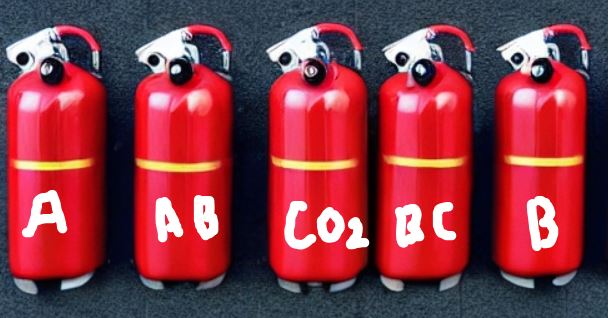1.0 PURPOSE: The purpose of this Standard operating procedure is to provide an operating procedure for the fire extinguishers.
2.0 SCOPE: The procedure is relevant for Fire Extinguishers in industries.
3.0 RESPONSIBILITY: Safety department, EHS department, and Security department.
4.0 ACCOUNTABILITY
Head – Engineering/Environment and Health Safety

5.0 PROCEDURE:
5.1.0 Fire is classified into four types based on its usage:
5.1.1 Class A Fire: For All solid fires
5.1.2 Class B Fire: For All liquid fires
5.1.3 Class C Fire: For All gas fires
5.1.4 Class D Fire: For All metal fires
5.2.0 Fires should be extinguished by using the different extinguishers as given below:
5.2.1 Class A fire – Water and CO2 types Mechanical foam type extinguishers.
5.2.2 Class B fire – Foam, Dry chemical powder (DCP), and carbon dioxide extinguishers.
5.2.3 Class C fire – Dry chemical powder (DCP) and carbon dioxide extinguishers.
5.2.4 Class D fire – Extinguisher with special dry powder metal fires.
6.0 Operating procedure
6.1 Dry Chemical Powder type
6.1.1 ‘Squeeze grip nozzle type dry chemical powder fire extinguisher’ (9, 50, 150) liter capacity.
6.1.1.1 Take the extinguisher and position yourself on the upwind side of the fire, about 5 to 8 feet away. Remove the extinguisher’s safety ring.
6.1.1.2 With one hand, hold the squeeze grip nozzle and point it at the fire, and With the other hand, tap the knob.
6.1.1.3 Apply pressure to the squeeze grip nozzle to push the powder around the fire’s center.
6.1.1.4 As the pressure decreases, move the nozzle quickly in a side-to-side motion.
6.1.1.5 Use a new fire extinguisher if the current one runs out or fight the fire until the flames go out.
6.2 Foam type
6.2.1 Take the extinguisher and move away from the flames by 6 to 10 feet.
6.2.2 Remove the safety clip while facing the fire’s upwind side.
6.2.3 Hold the extinguisher’s hose pipe that has the foam dispersing nozzle in place.
6.2.4 With the other hand, tap the knob.
6.2.5 When the pressure within the cylinder builds up (30 to 45 seconds), direct the jet at the inside edge of the object or container so that it distributes evenly and creates a foam blanket over the burning liquid.
6.2.6 If possible, approach the fire gradually while the extinguisher’s pressure decreases.
6.2.7 Use another extinguisher if the first one runs out or fight the fire until the flames go out.
Note: Avoid shooting the jet directly into a liquid because doing so will push the foam below the surface and make it useless. Additionally, it might spatter flaming fluids onto the environment and spread the flames.
Related: Fire safety in Pharmaceuticals
6.3 Carbon dioxide type
6.3.1 Take the extinguisher and move away from the flames by 5 to 8 feet.
6.3.2 Be on the fire’s upwind side.
6.3.3 Remove the safety ring/pin, if provided.
6.3.4 Hold the horn in one hand and direct it towards the fire with the other hand, turn the valve in an anti-clockwise direction in order to get the required pressure and jet length.
6.3.5 Carry the extinguisher with the help of a handle, direct the jet at the base of the fire, and operate in a sweeping motion. Proceed towards the fire and be as close as possible to the fire.
6.3.6 Fight the fire till the flame disappears or the extinguisher becomes empty.
Note: Most suitable for indoor fires and on fires in electrical equipment. If the horn is of metal type, then do not use the same extinguisher on electrically live equipment or cable or electrical fire. Ventilate the area after use. In case of a major fire, the hydrant system can be operated by the safety squad.

Naresh Bhakar is the Founder and Author at Pharmaguddu.com, bringing his extensive expertise in the field of pharmaceuticals to readers worldwide. He has experience in Pharma manufacturing and has worked with top Pharmaceuticals. He has rich knowledge and provides valuable insights and data through his articles and content on Pharmaguddu.com. For further inquiries or collaborations, please don’t hesitate to reach out via email at [email protected].
